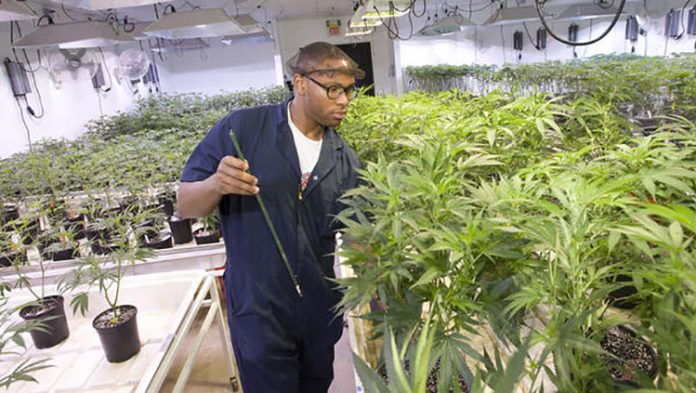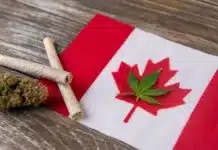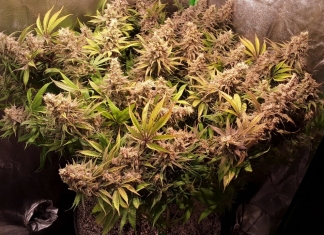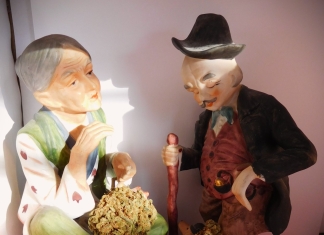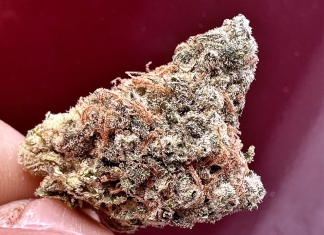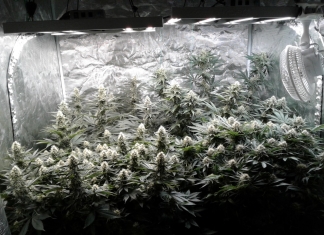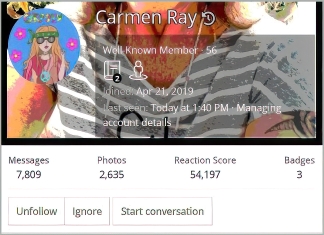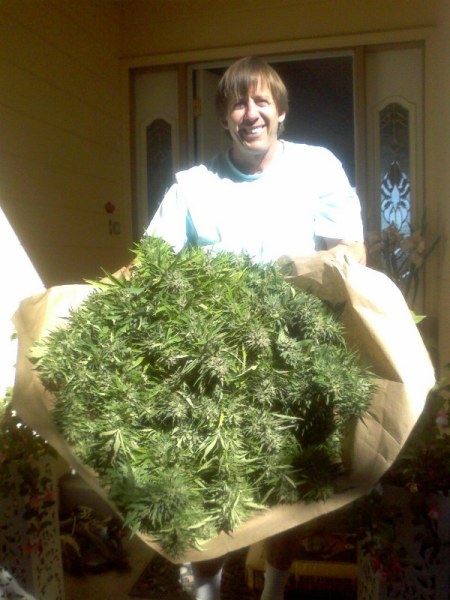There are hundreds, even thousands of popular cannabis strains available on the black market. But how do these illicit, black market plants find their way into a legal, regulated market?
Up to this point, because there are so few legal sources of cannabis in the world, the government of Canada has largely relied on finding ways to transition these illegal plants into a regulated system.
So how does an illegal plant become legal? Transitioning from prohibition to regulation can be a complicated process, and this process impacts patients, licensed producers and even researchers, and several industry experts say it is already creating a genetic bottleneck.
The government of Canada has struggled with this issue since Health Canada initially implemented the MMAR in June 2001, in response to R v Parker, and allowed home production of marijuana, but had no legal source for that marijuana.
When patients began to grow their own cannabis under the Medical Marihuana Access Regulations, the issue of where they would get the seeds, clones, etc. was a challenge for the government, because such legal sources at that point were essentially non-existent.
Prairie Plant Systems (PPS) had been started in 2000 as the sole legal commercial producer of medical cannabis in Canada, but the plants they grew were still the property of the Canadian government and basic logistics made providing plants from this facility obviously challenging. In addition, they initially only grew one strain.
(An interesting side note here is the seeds initially grown by PPS were secured via police who acquired them in arrests and raids after the National Institute of Drug Abuse in the U.S. refused to share the seeds it cultivates for scientific research.)
What this meant was that anyone who wanted to grow their own cannabis under the MMAR needed to either buy seeds from Health Canada, via PPS, find another licit source, or turn to the black market.
Since for many patients, the black market was so easily accessible for cannabis seeds, this became an obvious solution. In addition, the feasibility of ensuring the plants being grown by thousands of legal medical patients were of legal origin would be a difficult if not impossible feat.
Home Growers
For example, when Eric Nash, one of those authorized by the government to produce medical marijuana, repeatedly asked Health Canada for seeds in 2002, he was told they had no available source, and was eventually told he should simply buy seeds illegally.
“I spoke with Health Canada on the phone at length, and at one point, one of the case managers with the MMAR said ‘look, just go buy them off the internet, that seems to be what everyone else is doing’,” says Nash. “So I went to Marc Emery.”
By 2003, Nash explains, Health Canada did begin providing ‘legal’ seeds via Prairie Plant Systems, but the genetic variety from these was still limited to what PPS was growing. Because of this, as well as the ease with which people could still buy seeds online illegally, most growers continued to buy from illicit sources.
As Nash explains, a wide variety of genetics are needed to address the various symptoms people are seeking to use cannabis for. For the most part this genetic variety exists primarily in the black market, simply due to decades of prohibition. As governments begin the cumbersome process of not only legalizing, but regulating cannabis, establishing a formal ‘amnesty’ program for those formerly-illicit plants can be a legal challenge.
And while the legal sources might have been limited, the black market was obviously alive with variety. In 2001 Marc Emery was still running a thriving seed business serving customers in and outside of Canada, and commercial seed producers in places like the Netherlands have long sold seeds to adventurous green thumbs willing to take the risk of ordering an illicit product across international borders.
Even US states where it still remains federally illegal have long shared and sold clones and seeds for decades, in large part due to the fact that prohibition meant no legal channels or paperwork to be filed. While sending a legal product over borders can be a bureaucratic nightmare, illegal products require no such authorization for those willing to take the risk.
As many of these genetics found their way into the MMAR product over more than a decade, via home growers and designated growers buying and trading seeds and clones and starts, Canada’s ‘legal’ genetic seed bank grew. By the end of 2012, there were just over 18,000 Personal Production Licenses (PPLs) under the MMAR and over 3,000 Designated Production Licenses (DPLs), growing plants largely transitioned in from the black market.
Licensed Producers
When the Canadian government announced the introduction of the MMPR in 2014 and the phasing out of the MMAR, many of these issues of where to source legal genetics from re-surfaced. While some companies were able to purchase seeds from Holland or the Netherlands by securing an import license under the MMPR, Health Canada also provided a transition period where those granted a License to Produce under the MMAR could import genetics (with the proper paperwork) from the MMAR prior to April 1, 2014.
It was by this mechanism that many genetics refined and even created under the MMAR by patients and designated growers found their way into the current MMPR, but this opportunity was only afforded to those lucky enough to get a licenses before the April 2014 cut off date. Only 14 Licensed Producers fell into this category, meaning anyone licensed after that April 1 2014 have to either buy their genetics from another already-licensed producer or from an increasingly-limited overseas seed source like the Netherlands.
Overseas seeds sources present another limitation. The process of legally importing seeds is a challenge because they can only be purchased from a country with a federally-legal program that allows for exports, of which until recently there were only a few (Holland, Israel, etc.). The paperwork required and standards imposed can be limiting. In fact, only one Canadian company has ever legally imported clones: Bedrocan Canada. For this to occur the company had to first obtain approval from the Canadian Food Inspection Agency. This approval culminates in the issuance of a Phytosanitary certificate demonstrating the live plant material is safe and free of pests. Seeds must go through a similar process.
In addition, medical cannabis laws in Holland are changing, and the Netherlands’ sole legal supplier of medical cannabis is Bedrocan BV, who is the partner company of Bedrocan Canada, now owned by Tweed Inc., or Canopy Growth Corporation.
This represents another bottleneck, says Philippe Lucas, the interim Executive Director at the Canadian Medical Cannabis Council (and the VP of Patient Services at Tilray, a Licensed Producer on Vancouver Island, BC). Some new MMPR producers are able to arrange a partnership with existing producers to buy genetics off of them, but beyond that, there is basically no way to get new genetics, Lucas explains. And even those LP’s who will sell new producers plants aren’t going to be motivated to sell any unique or proprietary genetics that offer them a market advantage.
Lucas says this will also likely be an issue for the government when it comes to responding to last February’s Allard decision as it relates to accessibility, affordability and the likelihood of personal production. In the Allard decision, the court found the MMPR as it stands is not constitutionally sound and ordered Health Canada to address issues of cost and accessibility. Much of the arguments brought forth in Allard had to do with personal production rights and the fact the government removed those rights afforded under the MMAR when they created the MMPR.
“I think that this is an issue that’s live right now for those new licensed producers, and likely an issue that’s going to surface again under Allard,” says Lucas, “to try to figure out where those patients who want to grow their own cannabis are going to access genetics legally.”
While some LPs could potentially sell genetics to authorized patients, the logistics represent significant problems, he explains, because of the limitations of sending live clones through the mail, as well as producers’ ability to produce seeds in a timely manner, as well as their motivation to allow what may be considered proprietary genetics back into the public domain.
“There may be some licensed producers who see a business opportunity there and may be willing to share their genetics. I think there will be a number who simply don’t want to get involved in that kind of market. I think a lot of licensed producers have a limited amount of space in order to produce their own clones and propagate their own plants and it may be an imposition for them to do so on a larger scale basis.
“So I think that’s still an open question and I really look forward to seeing how the government is going to address it under Allard, but I think we need a more immediate solution when it comes to these new licensed producers. Health Canada has licensed a number of new producers in 2016 and a number of them I think are out there right now trying to source genetics and hitting into some roadblocks and not able to start up as effectively as they would have liked.”
Researchers
This same roadblock is frustrating researchers, as well as licensed producers, says Jonathan Page of Anandia Labs in British Columbia. Page, also at adjunct professor at UBC, has been researching cannabis for more than a decade.
In 2011 Page and co-workers published a paper in the journal Genome Biology that reported the draft of genome of Cannabis sativa, using the popular Purple Kush strain as the source. More recently, Page published a study comparing the genetic sequences of over 120 different cannabis types.
Securing a source of legal genetics for research is challenging says Page, noting it’s easier to buy seeds on the black market than it is to go through the proper legal channels he has to use to engage in his research at Anandia.
“If I go to Health Canada to request a legal source of seeds for research, my options are limited. But I could go to any shop in Vancouver or go on the internet and choose from tens of thousands of seeds. It’s an incredible challenge for legitimate research.”
Home Production 2.0
If Health Canada decides to allow personal production under the revised MMPR, Page says he doesn’t see how the government could effectively limit genetics for patients in this way, not only because such a limitation would likely be in violation of the spirit of the court’s ruling in regard to accessibility, but also because it’s difficult to track genetics.
“I think it will be much like how seeds were treated in the MMAR. Health Canada will have to provide a licit source, and that licit source will likely be the LPs, but patients who grow for themselves will end up doing whatever they want.
“Canada is on the leading edge of this issue and when that happens, you get these inconsistencies in policy when much of the rest of the world is still under prohibition. The idea that you can transition from an illegal marijuana industry to a licit, regulated medical or recreational marijuana industry without thinking about plant genetics doesn’t make sense.”
Eric Nash agrees.
“Patients do need a wide selection of strains so I think that’s going to present itself fairly soon here, especially where we get into home growing. If Health Canada is targeting that August 24th date to come down with a set of regulations where patients can again grow at home, legally, for medical purposes, then they’re going to have to find a way to source genetics so people aren’t forced into the early days of the MMAR which was going to the street for those strains, and being told by Health Canada to go to the street for those strains.”
In the meantime, we just have to wait and see what the government does ‘soon’.


